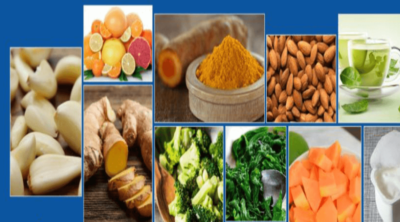
So similar, yet so different! Here, in this article, we carry out an interesting lettuce vs. cabbage comparison, and figure out the key differences between both the veggies. Keep reading!
The first difference, lettuce is more beautiful! Arr, generally speaking. So, many people don’t pay heed to their hams and sandwiches, and continue eating their meal, thinking it’s cabbage inside. Well, to their surprise, it’s lettuce most of the time. I, for instance, have had a hard time figuring out if I’m eating lettuce or cabbage. It took me 4 years of continuous eating at McDonald’s to realize that, I was eating lettuce inside my ham, and not cabbage. Well, they’re so similar in appearance! If not technically differentiated, one can hardly make out what’s what. However, one of the key differences between a lettuce leaf and a cabbage leaf is that, lettuce has more water to it. It looks more dewy, or should I say, watery. Cabbage, on the other hand, appears more firm and opaque. Lets carry this comparison further by describing the families they belong to (yes, lettuce and cabbage belong to different families), their growth process, and their health benefits.
Family (Plant Species)
While lettuce is a composite plant, medically referred to as a variety of Lactusa sativa, cabbage belongs to the clan varieties of the Brassica oleracea species, and is characterized by thick green leaves covered over each other. Lettuce has similar appearance, apart from the usage of crisp and edible leaves it has, that are mostly brought into use for preparation of salads. On the other hand, one needs to cook cabbage in order to be eaten. It’s interesting to know that while the family lettuce belongs to also includes food plants such as sunflower, chicory, and globe artichoke, the Brassica oleracea family that cabbage belongs to includes cauliflower, broccoli, turnip, mustard, radish, and cress.
Growing Conditions
Lettuce: Lettuce grows in shade with some protection from the heat in the presence of tall crops. The growing field can be screened with cloth or a net so as to protect it from the summer heat. Since the roots of lettuce dry very quickly, it often requires a lot of moisture to grow. It develops in light, sandy soil with an ideal pH between 6.0 to 7.0.
Cabbage: For cabbage to grow properly, cool temperature is ideal. Even though it can be grown in all kinds of soil, it is highly sensitive to soil acidity, and hence, requires pH level not more than 6.5. Again, like lettuce, it requires a moisture-retentive soil texture, since its roots dry quickly. To prevent the cracking of cabbage’s head, the supply of water should be even throughout the growth of cabbage.
Nutritive Value
When it comes to the nutritive value, between lettuce and cabbage, it is lettuce that is considered highly nutritious since it contains more energy (13kcal). Even though it is extremely low in calories, it contains the right amount of carbohydrates, protein, dietary fiber, and fat. On the contrary, cabbage is highly efficient in blocking the organification in thyroid cells, and hence, is often referred to as a goitrogen agent. It is low in saturated fat and cholesterol too, and is highly beneficial in case of magnesium, calcium, and iron deficiency. Cabbage, in the form of juice proves to be one of the most effective home remedies to treat peptic ulcers. It is used in a variety of dishes all over the world, with China and India outranking other countries in terms of production and consumption.
So, wrapping up the analysis, if weight loss is one of the many aims of your life, don’t forget to include cabbage and lettuce in your diet, since, both are extremely low in calories, and can prove to be highly nutritious. For some crunchy salad experience, lettuce is your savior, while on the other hand, if a highly nutritious and low cal meal is what you require, cabbage makes for a sophisticated and healthy substitute. Bask in the greens!

